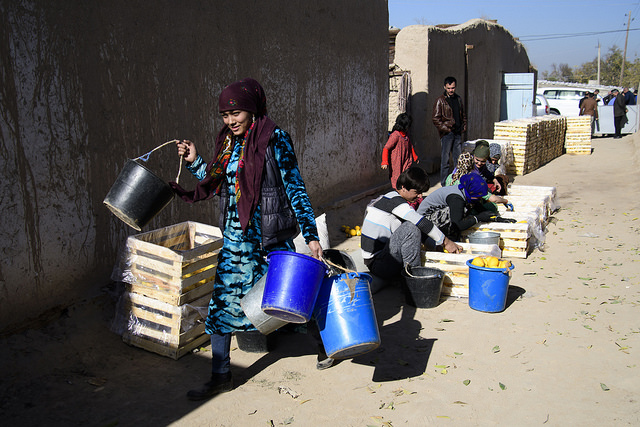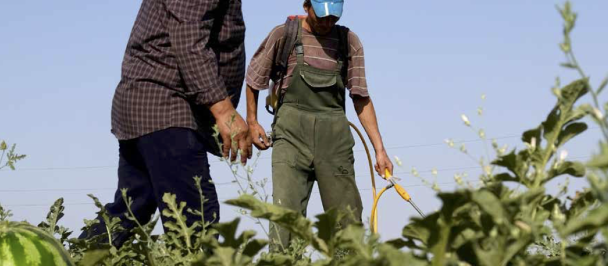Cultivation of lemons in Tajikistan. Photo credit: UNDP Tajikistan.
Many countries in Eastern Europe and Central Asia have made remarkable progress in recent years, as measured by economic growth and reduction in poverty. But, despite clear gains, the region's middle-income countries continue to face structural bottlenecks that must be addressed before the UN's Sustainable Development Goals can be achieved.
In the World Bank’s most recent “Doing Business” report, half of the Eastern European and Central Asian countries included in the global ranking were among the top 50. As a measure of economic maturity, the report confirms what many in the international development community have long known: the region is ascendant.
Over the last decade, the economies of Eastern Europe and Central Asia have recorded spectacular gains, buttressed by ambitious market and public-sector reforms. The question now is how to ensure that this progress – which has tripled the size of the middle class – is sustained.
Signs of the region’s social and economic prosperity are everywhere. In Azerbaijan, incomes have increased dramatically in recent decades, and only 5% of the population now lives below the poverty line – down from nearly 50% in 2002. Elsewhere, Estonia is the third country in Europe in startups per person and has one of the fastest Internet speeds anywhere. And from Albania to Kyrgyzstan, e-government systems are allowing more people to connect with critical services through online and electronic portals.
But while it is tempting to assume that the region is destined for prosperity, structural bottlenecks continue to slow progress, especially in the Western Balkans, the southern Caucasus, and parts of Central Asia. To maintain momentum in meeting the United Nations Sustainable Development Goals (SDGs) by 2030, leaders must address three key issues.
First, the region’s economies need to be strengthened to incentivize smarter, more sustainable growth. For example, fossil-fuel subsidies should be reconsidered, because they discourage investment in energy-efficiency projects, and impede the development of renewable technologies. Similarly, while public financing of pensions and welfare programs is dependent on taxing labor, much of the region currently suffers from high rates of unemployment; in the Western Balkans, there are nearly no jobs, or none at all. Job creation is an urgent challenge for every state in the region.
Second, in many countries, the space for civil society is becoming narrower, posing a threat to pluralism and accountability. To prevent conflict and give voice to the region’s marginalized groups, tolerance and respect for human rights must be made essential ingredients of governance.
Finally, the region must coordinate on strategies to address the changes that automation and artificial intelligence will bring to the labor market. Leaders in some countries, particularly Belarus, are shifting economic output from heavy manufacturing to technology startups. But authorities everywhere can do more to increase the resilience of their workforces.
Fortunately, governments, technology companies, civil-society groups, and journalists recognize the salience of these issues and are working together to build more transparent and accountable institutions. In many countries, heads of government are using the SDGs to guide their national planning and efforts to legislate reforms. The parliaments of several Central Asian countries have even endorsed the SDGs as a development roadmap.
Changes like these are helping to translate development ambition into action. In Armenia, the government recently created the world’s first national SDG innovation laboratory, a collaborative effort designed to “accelerate” SDG implementation. Initial research efforts will focus on increasing the country’s tax collection, improving its education system, and boosting its renewable-energy sector.
Meanwhile, planning officials in Moldova have used crowdfunding to raise millions of dollars from the diaspora to fund sustainable development projects at home. Revitalization efforts have included the reconstruction of a public plaza in the capital, Chișinău, and the expansion of infrastructure in rural areas.
The region’s private sector is also participating actively in sustainable development efforts. From Siemens’ green heating and air conditioning systems to Unilever’s “equal pay for equal work” policy, multinational firms operating in Eastern Europe and Central Asia are embracing sustainability and equality as viable business models.
In only a few decades, the people of Eastern Europe and Central Asia have witnessed profound political and economic changes. To capitalize on the development progress already made, countries and organizations must learn from one another, adapting solutions to local conditions. That will be the main topic at the Istanbul Development Dialogues, an annual global gathering organized by the UN Development Programme, this week. As the new UNDP Strategic Plan for 2018-2021 argues, collaboration is a critical component to any sustainable-development strategy.
If the measure of a country can be calculated by how easily business is conducted within its borders, the states of Eastern Europe and Central Asia have a bright future. With strong leadership that transforms the region’s economies and modernizes its institutions, the region’s recent gains will not be fleeting.
*This piece was originally published as an op-ed in Project Syndicate.

 Locations
Locations

